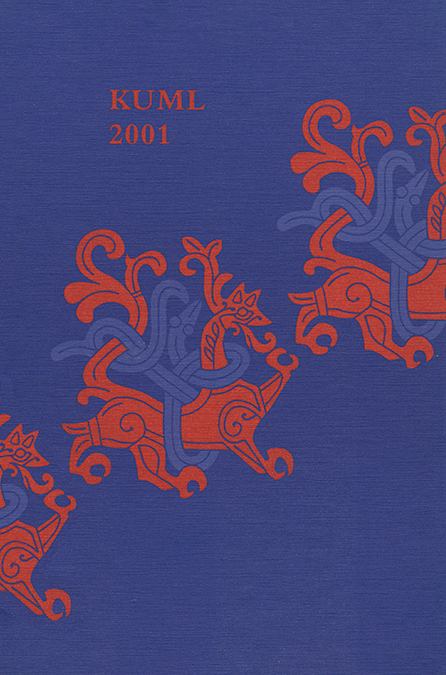Rykker vi stadig frem? – Dansk arkæologi 2001 mellem nostalgi og realisme
DOI:
https://doi.org/10.7146/kuml.v50i50.103167Keywords:
museer, dansk arkæologi 2001Abstract
Are we still advancing?Danish archaeology in the year 2001 between nostalgia and realism
Danish archaeology is a queer specimen which is favoured by an outstanding source material and a long and mostly proud research tradition. Around the turn of the millennia, Danish archaeology is benefiting from two circumstances: Every year excellent new finds are made, and every year thorough investigations are made into both the new and the old existing material. However, Danish archaeology also holds comprehensive problems that go a long way back. One of the more serious ones is the lacking ability to take care of the relics of the past in the countryside and the lack of funds for investigating relics of the past threatened by destruction.
The first Danish law to ensure a general protection of the relics of the past was the nature conservancy law, which was passed in 1937 – a rather late date compared with other European countries and drawn up in conflict rather than in cooperation with Danish archaeology. During the last decades of the 19th century and the first decades of the 20th century, the leading Danish archaeologists harboured a strong aversion to legal measures that might put the good relations to the farming community at risk. They preferred voluntary agreements with the individual farmers although intensified farming was threatening the relics of the past already then. Nevertheless, the Danish nature conservancy association, which was and still is a strong nongovernmental organisation, had the relics of the past included in the nature conservancy law. This secured numerous relics in the last moment. However, as the transformation of the law into practice was left to the National Museum, which choose to be lenient, most of the relics of the past were kept outside the conservation. The result was that most of the Danish relics of the past are still being cultivated and consequently getting worn down (fig. 2). Farming during the last two decades especially has severely affected both settlements and graves, and each year relics of the past are being destroyed in alarmingly large numbers. For numerous structures and even types of structures a total destruction is drawing shockingly near.
Apparently the responsible politicians and officials have neither the will nor the ability to secure the relics of the past. However, the fact that there is no will either to find the necessary means for rescue archaeology is completely incomprehensible. The need for funds for rescue excavations is far larger than the appropriation, which is a well-known and well-documented fact (fig. 1).
The article discusses different means of solving this problem. First, there is a need for politicians and officials to work seriously for safeguarding the rehcs of the past. Secondly, they must provide necessary funds for the rescue excavations. However, further professionalisation of the local museums is also needed, as very little has happened since the first wave of professionalisation in the 1960s and 1970s. The manning and means have far from kept up with the tasks, and if the museums are to enter public planning with some importance, resources and routines of a different kind than those developed thirty years ago are necessary. Much has happened within the excavation field (fig. 3), but the museums have not yet reached the professional levels of year 2001. One solution is a better cooperation between the museums and the universities. Today, most problems are solved within the field of responsibility of the individual museum, which rarely seeks advice and guidance. Fusing the museum into larger units is hardly a good solution as enlarged fields of responsibility will also give a longer distance to the local polticians, citizens, and users and result in fewer finds (fig. 4). Finally, there is also a need for revising the archaeological education. The way it is organised today, the candidates do not achieve sufficient skills within the practical museum-relevant areas that they are expected to serve when they have finished their studies. This goes for excavations, but also for planning, project management, economy, law, and communication. A professionalisation of the museum field is naturally linked to a qualification of the candidates.
Claus Kjeld Jensen
Kulturhistorisk Museum Randers
Translated by Annette Lerche Trolle
Downloads
Published
2001-08-01
How to Cite
Jensen, C. K. (2001). Rykker vi stadig frem? – Dansk arkæologi 2001 mellem nostalgi og realisme. Kuml, 50(50), 253–272. https://doi.org/10.7146/kuml.v50i50.103167
Issue
Section
Articles
License
Fra og med årgang 2022 er artikler udgivet i Kuml med en licens fra Creative Commons (CC BY-NC-SA 4.0).
Alle tidligere årgange af tidsskriftet er ikke udgivet med en licens fra Creative Commons.


